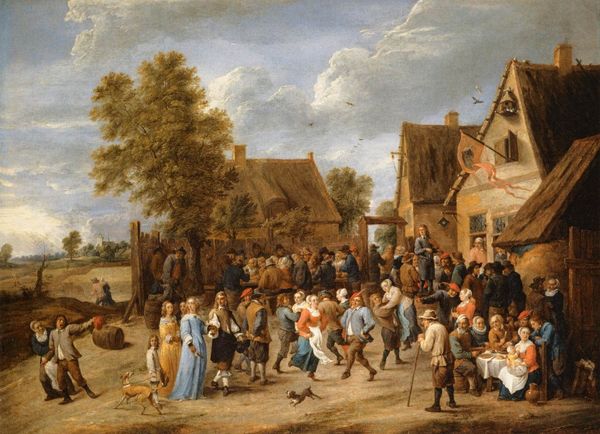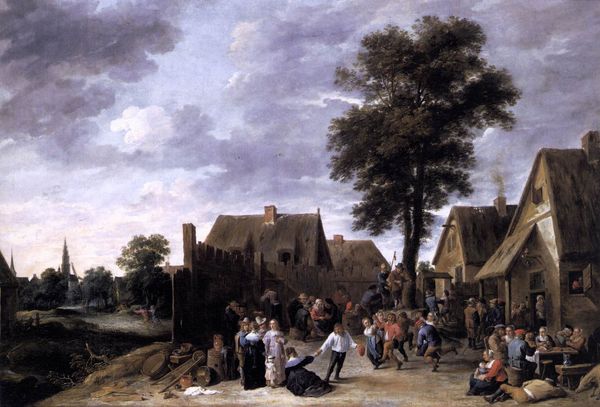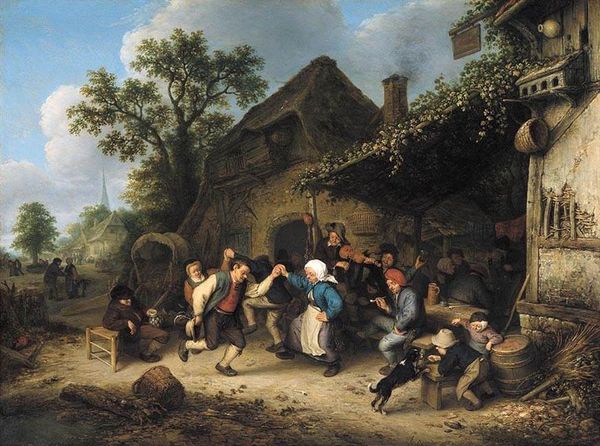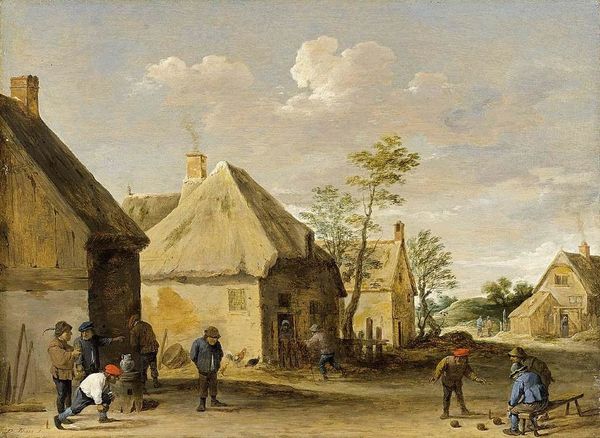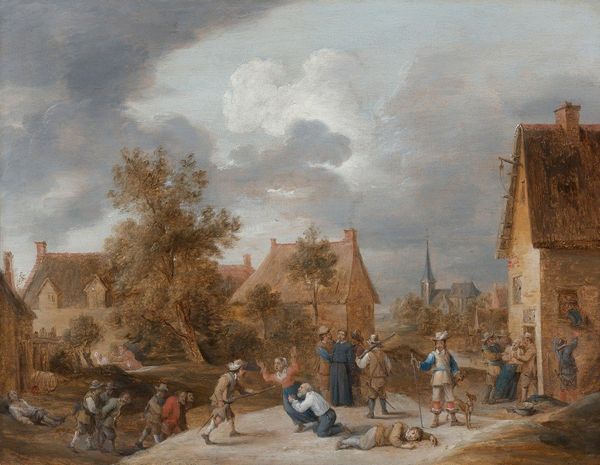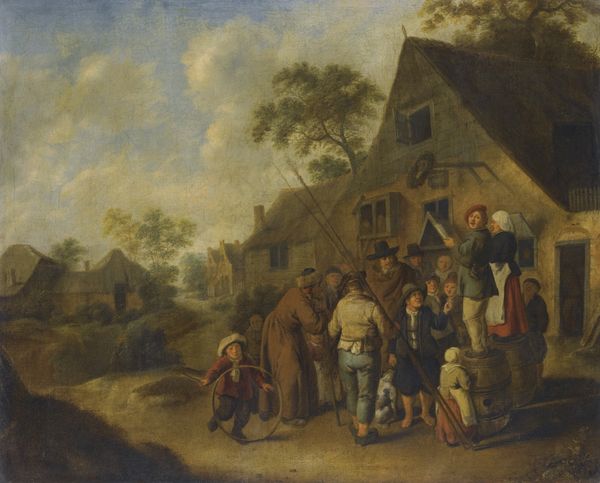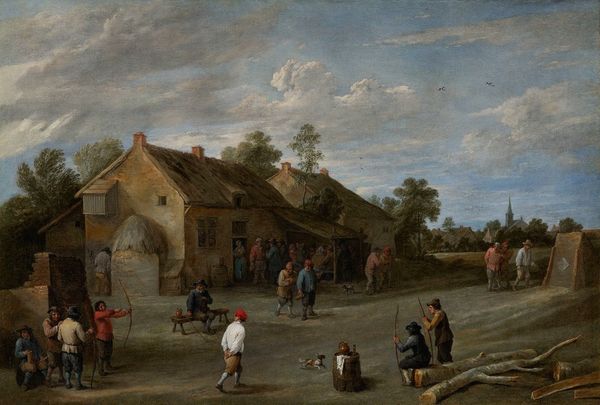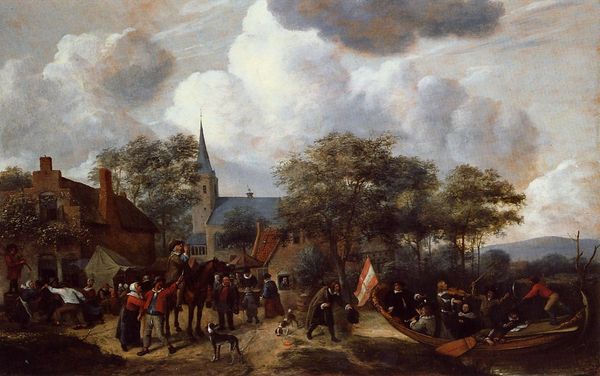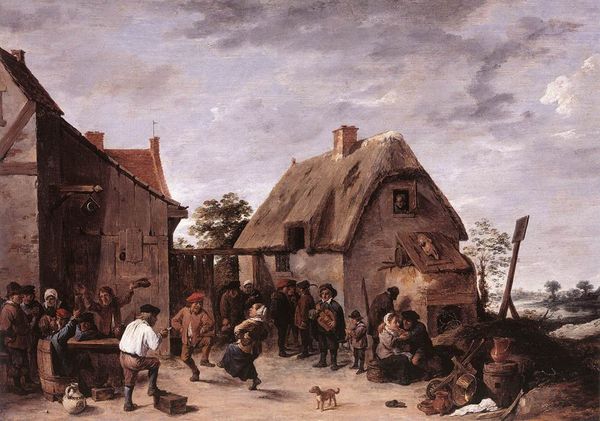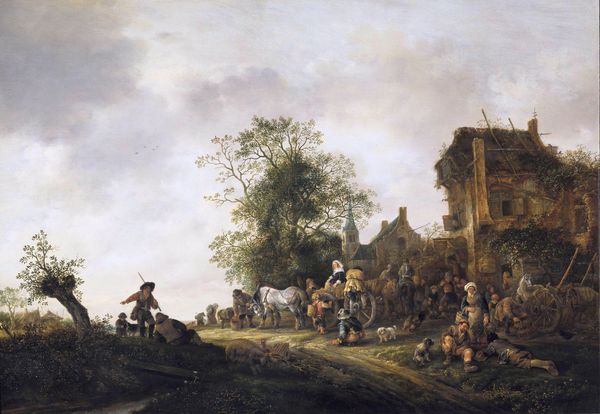
painting, oil-paint, architecture
#
baroque
#
painting
#
oil-paint
#
landscape
#
figuration
#
oil painting
#
genre-painting
#
architecture
Dimensions: 221 x 157 cm
Copyright: Public domain
Editor: So, here we have David Teniers the Younger's "Kermess" from 1652, an oil painting depicting what appears to be a lively village festival. The composition feels quite crowded, but the figures seem full of life. What's your take on it? Curator: Well, this isn't just a snapshot of a village enjoying itself; it's a carefully constructed representation of social dynamics in 17th-century Flanders. The "Kermess," or village fair, was a space where social hierarchies were both reinforced and momentarily subverted. Note how Teniers positions figures from different social classes within the scene. Do you see any clues as to which figures hold power and which do not? Editor: I see what you mean! The figures in finer clothes seem to be observing the revelry from a slight distance, while the peasants are more involved in the dancing and drinking. Curator: Exactly. Teniers, who was a court painter, was depicting these scenes for a wealthy, often urban, clientele. These paintings, then, functioned almost as a form of visual ethnography, presenting rural life as simultaneously charming and Other. Consider, too, the way gender plays out here; who seems to be controlling the action? Editor: That's a good question! It's mainly men who are at the centre of attention, dancing and playing music, but there are also groups of women eating or minding children, so maybe there is another conversation around female agency we should explore? Curator: Precisely. So, "Kermess" is not simply a festive scene, but also reveals much about power, class, and gender relations in Teniers’s time. Editor: This has been enlightening, offering a new way of understanding "Kermess" as a socially complex document, beyond just a fun genre painting. Curator: Agreed. Thinking about art in its social and political contexts allows us to connect to the past and understand our present.
Comments
No comments
Be the first to comment and join the conversation on the ultimate creative platform.
